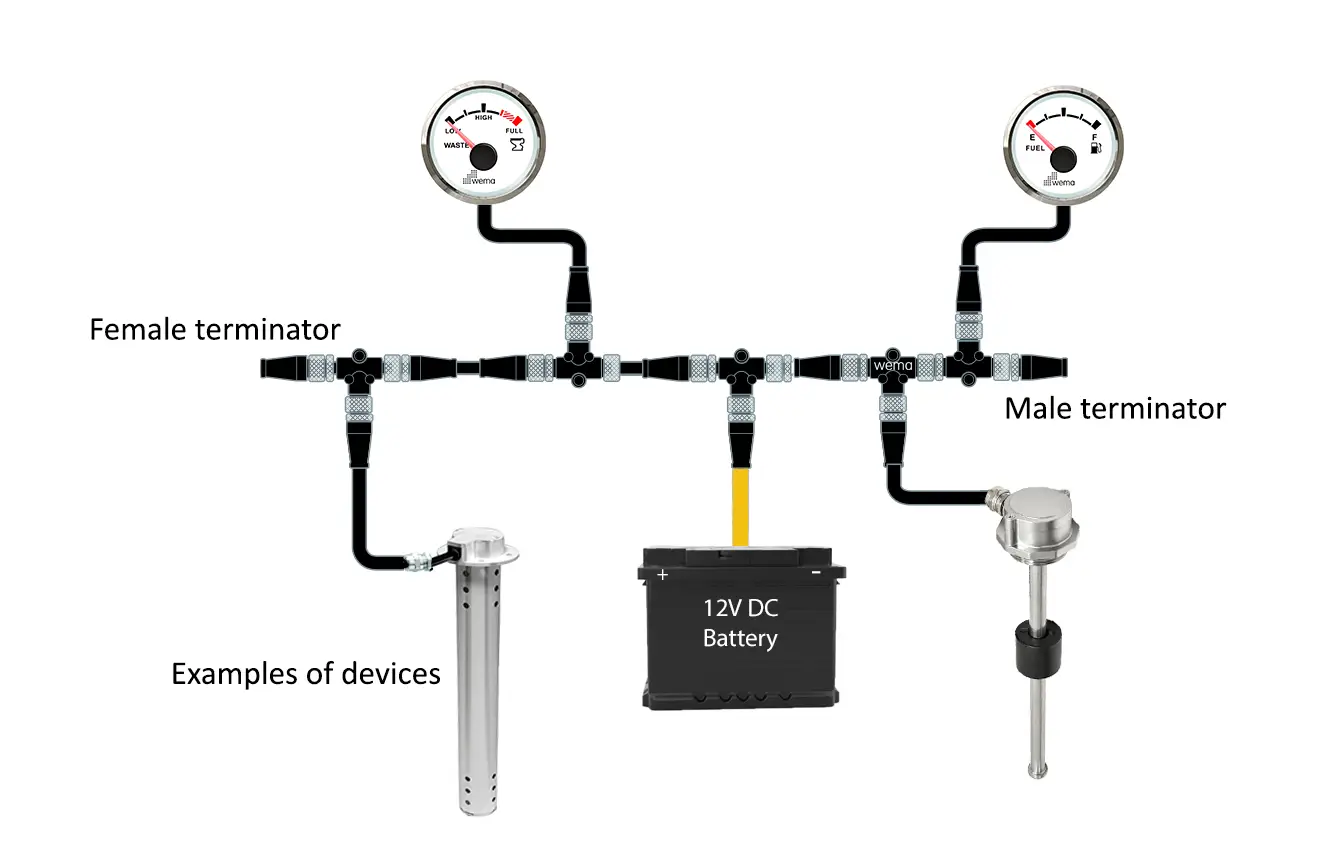NMEA2000 digital network explained
Example NMEA2000 Network

The NMEA2000 digital network represents a cutting-edge communication system tailored for marine environments. This standardized protocol facilitates seamless interaction between various onboard devices, significantly enhancing the overall functionality and efficiency of marine electronics. The NMEA2000 network's robust design allows for reliable data transmission even in challenging maritime conditions.
NMEA 2000 utilizes a single multi-directional, multi-lane cable for certified device communication. This innovative approach not only simplifies installation but also dramatically reduces cable clutter on boats, contributing to a cleaner and more organized onboard environment. The streamlined cabling system also improves maintenance accessibility and reduces potential points of failure.
In a NMEA2000 network, each device can communicate with up to 50 others, creating a highly interconnected and efficient system. The network's backbone cable serves as the central communication pathway, with various connectors such as T-connectors and drop cables facilitating device connections. This architecture ensures rapid and reliable data exchange between all connected devices, from navigation equipment to engine monitors and environmental sensors.
One of the key advantages of the NMEA2000 network is its expandability and plug-and-play functionality. Adding a new device is as simple as connecting it to the backbone via a drop cable, after which it will automatically start communicating with other NMEA 2000 devices on the network. This feature makes system upgrades and modifications remarkably straightforward, allowing boat owners to easily adapt their systems to changing needs or technological advancements.
For boats with existing analog sensors, integration into the NMEA2000 network is possible using an analogue to digital converter. This allows older equipment to benefit from the advanced features of the NMEA2000 digital network, bridging the gap between legacy systems and modern marine electronics.
The NMEA2000 network architecture is designed for efficiency and reliability. Devices that meet the NMEA 2000 standard are connected to the backbone cable via drop cables, which not only power each instrument but also facilitate data exchange among all connected devices. This centralized approach allows a single display unit to present a wide array of information from various sources, promoting better integration and coordination between instruments. The result is a more comprehensive and user-friendly interface for boat operators.
Power distribution in a NMEA2000 network is handled through one or more power cables connected to the backbone. The strategic placement of these power cables depends on the number and location of devices in the network, ensuring optimal power delivery to all connected equipment. To maintain signal integrity and proper network termination, terminators are installed at each end of the backbone cable, preventing signal reflections and ensuring clear communication throughout the network.
Wema's NMEA2000 network solutions utilize micro cables and connectors, allowing for a maximum backbone cable length of 100 meters and a total maximum of 72 meters for all drop cables combined. Each individual drop cable can extend up to 6 meters, providing flexibility in device placement and accommodating various boat layouts. The NMEA2000 network's capacity to support up to 50 connected devices makes it suitable for a wide range of marine applications, from small pleasure craft to larger commercial vessels.
The NMEA2000 digital network operates at a communication speed of 250 kilobits-per-second, enabling rapid data exchange between sensors, display units, and other NMEA 2000 compatible devices. This high-speed communication ensures real-time data updates and responsive system performance, crucial for navigation, safety, and vessel management in marine environments.
From an electrical standpoint, NMEA 2000 is compatible with the Controller Area Network (CAN Bus) technology used in road vehicles and fuel engines. This compatibility allows for potential integration with other CAN Bus-based systems, expanding the network's versatility and opening up possibilities for cross-platform communication in marine applications.
The higher-level protocol format of NMEA 2000 is based on SAE J1939, with specific messages tailored for the marine environment. This adaptation ensures that the NMEA2000 network meets the unique requirements of maritime applications while benefiting from the robustness of established industrial protocols. The result is a reliable, efficient, and standardized communication system that has become the backbone of modern marine electronics.
Small Network Example

This diagram illustrates a basic NMEA2000 network configuration, showcasing the backbone cable, drop cables, and various connected devices. It provides a clear visual representation of how different components interact within the network, demonstrating the simplicity and efficiency of the NMEA2000 system. The diagram highlights key elements such as the backbone termination, power insertion, and the connection of multiple devices through drop cables, offering a comprehensive overview of a typical small-scale NMEA2000 installation.
